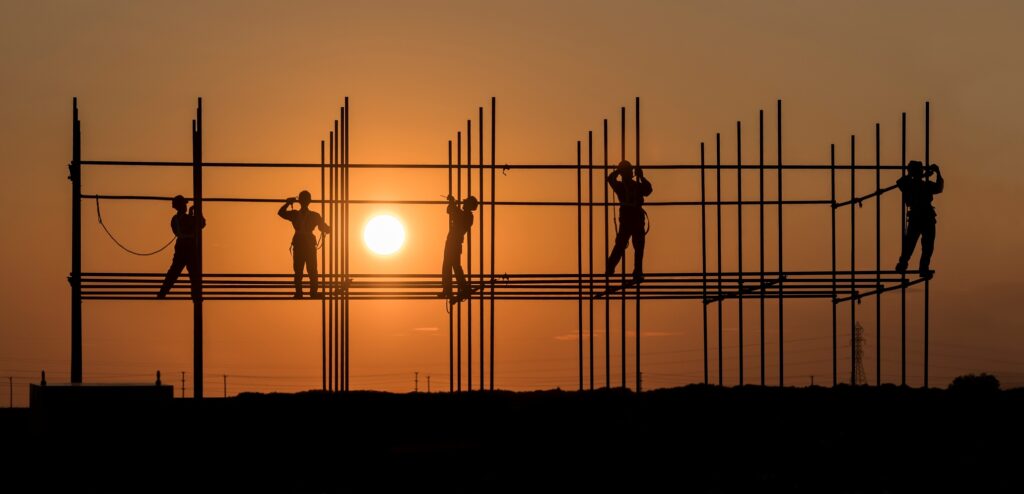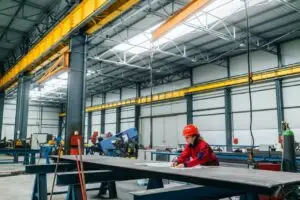
Managing large construction projects requires careful planning, coordination, and attention to detail. Effective project management can ensure that everything is completed on time, within budget, and to the desired quality standards. Here’s an outline of how large construction projects are managed from start to finish:
1. Project Planning and Design
- Initial Conceptualization: The process begins with defining the project’s goals, scope, and objectives. This involves collaborating with stakeholders (owners, architects, engineers) to establish the overall vision for the project.
- Design Development: Once the concept is clear, architects and engineers create detailed designs, blueprints, and plans. This is a critical phase where permits, regulatory requirements, and zoning laws are reviewed and integrated into the plans.
- Feasibility Study: This phase includes assessing the financial viability of the project, potential risks, and the resources required. It may also involve gathering environmental and geological data.
2. Budgeting and Financial Management
- Cost Estimation: A comprehensive cost estimate is created, including materials, labor, equipment, permits, and unforeseen expenses. Contingency funds are also set aside to address potential cost overruns.
- Funding and Cash Flow: The project team must ensure adequate funding for the project. Managing cash flow, ensuring payments are made to contractors, suppliers, and workers on time, is essential for avoiding delays.
- Regular Financial Reviews: Ongoing cost tracking and financial audits ensure the project stays within budget. Changes to the scope or unforeseen challenges can lead to adjustments in the budget, so regular reviews are essential.
3. Scheduling and Timeline Management
- Project Timeline: A detailed project schedule is created, breaking down the work into manageable tasks and assigning deadlines to each phase. This schedule is often managed using software tools like Microsoft Project, Procore, or Primavera.
- Critical Path Method (CPM): This technique helps to identify the tasks that must be completed on time to ensure the entire project finishes as planned. Delays in critical tasks can lead to overall project delays, so these tasks are closely monitored.
- Resource Allocation: Ensuring that enough workers, equipment, and materials are available when needed is critical. A well-managed schedule ensures that resources are used efficiently.
4. Procurement and Supply Chain Management
- Contractor and Subcontractor Selection: General contractors and subcontractors are chosen based on expertise, experience, and cost. Contracts are negotiated and formalized to ensure clear responsibilities and expectations.
- Material Procurement: The timely procurement of materials is crucial to avoid delays. Materials are often ordered months in advance to ensure there are no shortages during construction.
- Vendor Management: Regular communication with suppliers and vendors is necessary to ensure that the quality of materials meets the project’s specifications and that deliveries happen on time.
5. Construction Phase
- Team Coordination: The project manager oversees the daily operations of the construction site, ensuring that workers and subcontractors are fulfilling their responsibilities and following safety protocols.
- Quality Control: A quality assurance team is typically assigned to monitor the construction process and ensure that the work is completed to the correct specifications, meeting both safety and design standards.
- Risk Management: The project manager must constantly monitor risks to avoid disruptions. This includes managing unforeseen site conditions, safety hazards, and any issues related to weather or environmental factors.
- Communication: Consistent communication among the project team, contractors, stakeholders, and owners is key to keeping everyone on the same page. Weekly or biweekly meetings are common to discuss progress, challenges, and solutions.
6. Risk Management
- Identifying Risks: Risk management begins with identifying potential risks such as cost overruns, schedule delays, safety issues, regulatory changes, and unforeseen site conditions.
- Risk Mitigation Strategies: These risks are mitigated by creating contingency plans, setting aside budget reserves, and establishing safety protocols. Proactive management and constant reassessment of risks are essential.
- Insurance and Safety: Ensuring that adequate insurance coverage is in place to protect against liability, property damage, and worker injuries. Safety plans must be implemented to prevent accidents and injuries on-site.
7. Safety and Compliance
- Safety Standards: Construction sites must follow strict OSHA (Occupational Safety and Health Administration) guidelines and local safety regulations. Regular safety audits, training, and equipment inspections are conducted to ensure compliance.
- Environmental Compliance: Managing the environmental impact of construction is crucial. This includes ensuring waste management, erosion control, and preventing environmental damage.
8. Project Monitoring and Reporting
- Progress Tracking: Project managers track progress using tools like Gantt charts or Kanban boards. Milestones are identified, and performance is compared against the schedule to assess whether the project is on track.
- Adjustments: If there are delays or issues, the project team must take corrective actions. This could involve reassigning resources, adjusting schedules, or making design changes to stay within budget.
- Regular Reporting: Regular reports are submitted to stakeholders and owners to provide updates on project status, costs, timeline, and risks. These reports help ensure transparency and facilitate timely decision-making.
9. Final Inspection and Project Closeout
- Completion of Construction: Once the physical construction work is complete, final inspections are carried out to ensure that everything meets the design specifications and is ready for occupancy or use.
- Handover: The project team prepares a detailed handover report and any necessary documentation (e.g., warranties, maintenance schedules, user manuals) for the client.
- Post-Construction Evaluation: After the project is handed over, a post-construction evaluation is done to review what went well, what could have been improved, and lessons learned for future projects.
10. Post-Construction and Maintenance
- Ongoing Support: Some large construction projects involve maintenance contracts to ensure the building or infrastructure functions well over time. This may include routine repairs, upgrades, or operational support.
- Feedback and Improvement: Continuous feedback from stakeholders and users can help identify areas for improvement in the built environment, influencing future projects.




